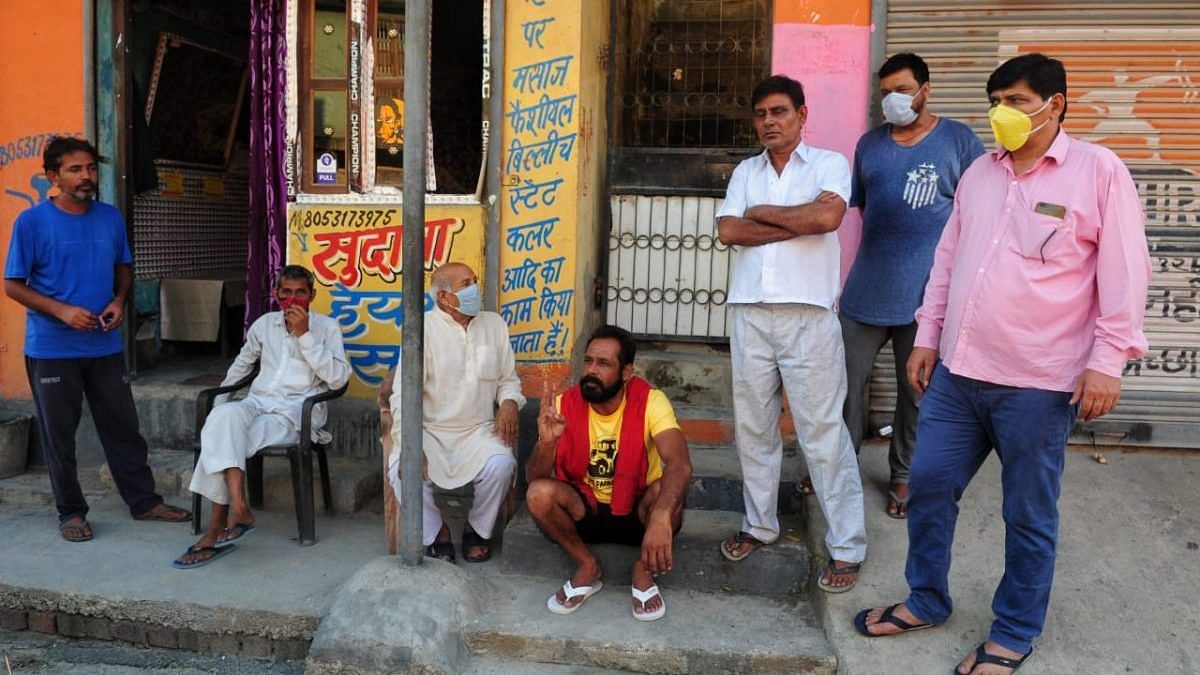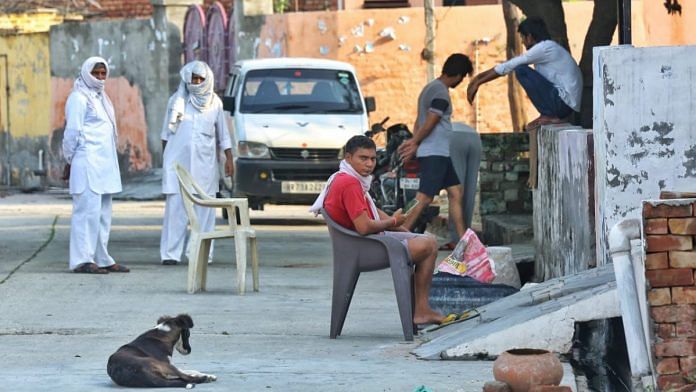Sisana (Sonipat): Right up until the last week of April, Aditya Khanna, Bunty to family and friends, commuted to Delhi for work every day from his village of Sisana in Haryana’s Sonipat district.
On 25 April, however, the 32-year-old, who worked as a peon in the income tax department, returned home with high fever. He subsequently tested positive for Covid-19 and died within four days of battling the virus.
Aditya was among first people to die of Covid-19 in Sisana. According to media reports and Satish Kumar, husband of sarpanch Munni Devi, since Aditya’s death, 39 more people have died in the village, majority of whom exhibited Covid-19 symptoms.
The Haryana government figures, however, state that only two people succumbed to the virus in Sisana, which has a population of about 10,000 people.
According to the district Covid Nodal Officer, Nitin Phalswan, 20 people have died in the village in the period since Aditya’s death, including non-Covid deaths. He claimed that the 40 deaths was an inflated figure.
But Sisana, 24 km from Sonipat town, is among the 35 villages that has been declared a hotspot by the Sonipat District Commissioner (DC) Shyam Lal Poonia.
The DC even visited the village on 13 May and opened an isolation centre at the high school there.
The deaths have also led to a dichotomy in the village, where residents are reluctant to get tested but have been queuing up for the Covid vaccines, in stark contrast to the vaccine hesitancy pervading a large part of rural North India.
Also read: In Haryana’s Jind, mobile ‘corona havan’ with fumes from 50 herbs aims to kill ‘mystery virus’
No to testing
Satish Kumar told ThePrint that television visuals of people dying for the want of oxygen dissuaded villagers from going to hospitals or getting tested altogether.
“People thought if they test positive, then that itself will deteriorate their condition and that they would be taken to a hospital, where they’ll definitely die of oxygen shortage,” Kumar said. “So even those exhibiting symptoms, sat quietly at home, and did not come forward to get tested.”
Pramod Dahiya, a Sisana resident, said rumours on social media over a spate of deaths at Titoli village in Hisar has also led to fear in the village. According to him, social media posts have been claiming that “radioactivity in 5G towers was causing sudden deaths in the villages”.
“Social media is full of conspiracies that in Titoli, people died of 5G radiation,” he said. “So villagers are very scared to get tested and even of the mobile towers around.”
Villagers also allege that testing itself hasn’t been happening. “Only on the day the DC visited (13 May), was testing conducted in this village. No testing happens here. Even if it does, we never get to know,” said Shiv Kumar Namburdar, a Sisana resident.
Phalswan, the district Covid nodal officer, disputed the claims. According to him, in the past 10 days, four testing drives were conducted in Sisana but the villagers have been reluctant to get tested.
“I’m handling 21 villages but Sisana has my special attention, believe me,” he told ThePrint over phone. “We always go door to door and ask people to get tested if they have any symptoms but they refuse to do so, claiming they don’t want to be hospitalised. It isn’t true that there was no awareness generation.”

Yes to vaccine
Satish Kumar, the sarpanch’s husband, told ThePrint that out of fear, villagers have been rushing to get vaccinated.
“On the first day of the drive in April, absolutely nobody went to get vaccinated.,” he said. “Since the beginning of May, after seeing so many deaths, they have overcrowded the entire area. But now the government has run out of vaccines. It’s all quite amusing if you look at it a certain way.”
Phalswan too said that he’s noticed that whenever cases are high, people refuse to get tested but queue up to get vaccinated.
“I’ve conducted almost 26 vaccination drives here, each time with 350 vaccines,” he said. “In the beginning, my team would sit all day waiting for people and hardly seven or eight would show up. But after the wave peaked, we started running short of vaccines here.”
The fact that those in the village are reluctant to get tested is evident at the isolation ward in the high school. When ThePrint visited the ward on 21 May, it was in disrepair with no one isolating.
A few youths were exercising at the school’s grounds while a guard kept watch.
“There are no doctors here, no nurses. There’s no electricity here the entire day and the washrooms aren’t so clean,” said Naresh Dahiya, a resident of the village. “Why would a person come here and isolate? For what joy?”
(Edited by Arun Prashanth)
Also read: 69-yr-old farmer on way to Hisar protest site gets breathless & dies, is declared a ‘martyr’






